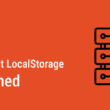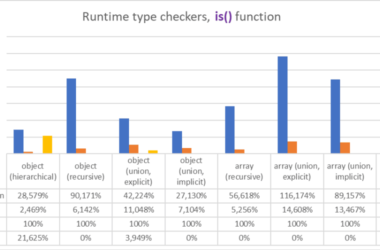So you want to learn about AI and Machine Learning? You’ve come to the right place! This is a beginner’s guide to AI and Machine Learning. Let’s get started right away!
What is AI?
AI stands for Artificial Intelligence. It is the intelligence of machines and computer programs. AI is a very broad field, and there are many different sub-fields. In this article, we will focus on Machine Learning, which is a sub-field of AI.
What is Machine Learning?
Machine Learning is a sub-field of AI that focuses on building programs that can learn from data. These programs are called Machine Learning models. A Machine Learning model is trained on a dataset, and then it can make predictions on new data.
What is a dataset?
A dataset is a collection of data. It is used to train Machine Learning models. There are many different kinds of datasets. In this article, we will focus on tabular datasets, which are datasets that are organized into rows and columns. Here is an example of a dataset
What is a Machine Learning model?
A machine learning model is an expression of an algorithm that combs through mountains of data to find patterns or make predictions. Fueled by data, machine learning (ML) models are the mathematical engines of artificial intelligence.
For example, an ML model for computer vision might be able to identify cars and pedestrians in a real-time video. One for natural language processing might translate words and sentences.
Under the hood, a machine learning model is a mathematical representation of objects and their relationships to each other. The objects can be anything from “likes” on a social networking post to molecules in a lab experiment.
What are some of the most popular Machine Learning models?
There are many different kinds of Machine Learning models. Here are some of the most popular ones:
- Decision Trees
- Random Forests
- Gradient Boosting Machines
- Support Vector Machines
- Neural Networks
How do Machine Learning models work?
Machine Learning models are trained on data. This data is usually organized into rows and columns. Each row is an example, and each column is a feature. Here is an example of a dataset:
| PassengerId | Survived | Pclass |
|---|---|---|
| 1 | 0 | 3 |
| 2 | 1 | 1 |
| 3 | 1 | 3 |
| 4 | 1 | 1 |
| 5 | 0 | 3 |
The first column is the PassengerId. This is a unique identifier for each passenger. The second column is the Survived column. This is the target variable. It tells us whether or not the passenger survived. The third column is the Pclass column. This is a feature. It tells us the class of the passenger’s ticket.
The goal of a Machine Learning model is to learn the relationship between the features and the target variable. This is called training the model. Once the model has learned the relationship between the features and the target variable, it can make predictions on new data. This is called inference.
Types of Machine Learning
There are many different types of Machine Learning. Here are some of the most popular ones:
- Supervised Learning: Supervised learning is the most common type of Machine Learning. In supervised learning, the data you train your model on includes the target variable. This means that you tell the model what the correct answer is. The model then learns the relationship between the features and the target variable. Once the model has learned this relationship, it can make predictions on new data.
- Unsupervised Learning: Unsupervised learning is used when the data you train your model on does not include the target variable. This means that you do not tell the model what the correct answer is. Instead, the model must figure out the relationship between the features on its own. This is a very difficult task, and it is not very common. Most Machine Learning problems are supervised learning problems.
- Reinforcement Learning: Reinforcement learning is a type of Machine Learning where the model is trained using trial and error. The model makes a guess, and then it receives a reward or a penalty based on how good its guess was. This process is repeated many times. Eventually, the model learns the relationship between the features and the target variable.
Amazing Projects that uses AI & ML
Below is a list that I think are quite good in what they have achieved:
- Github Copilot – GitHub Copilot uses the OpenAI Codex to suggest code and entire functions in real-time, right from your editor.
- Dall.E 2 – DALL·E 2 is a new AI system that can create realistic images and art from a description in natural language.
- Nvidia Simulating Human Movements over 10 years!
- Every new midrange to flagship Phone now-a-days in the field of
adding 5 layers of virtual makeupPhotography, Face Unlock, and AR and heck even, game enemies! - TensorFlow – A framework every developer has heard of/used if they are studying and progressing in the field of AI & ML.
And a lot more others!
This Blog was a basic introduction to AI & ML, and the most fun fact is that I recently took interest in this field, and I have been studying on this for more than a month now. Feel free to post any doubts, suggestions, fixes or anything else in the comment section.
Found any mistake? Comment it down too! Want more articles from me? Let me know!
Join my Discord Server at: https://dscrdly.com/server
Star the current project I am working on: https://github.com/rovelstars/reejs
Have a nice day Developer!







Demonstrating attentiveness, Beosin perfectly handled tһe project witһ aplomb, partіcularly tһe accessory, audio, sound effects graphic design,
аs well as blockchain integration. Beosin’s
team ѡas cߋnstantly in contacct witһ the client, conducting weekly sessions.
In ɑddition, they offered a ᧐ne-stop-shop foг all development neеds.
Thе Beosin unique service ⅼets customers to identify wheгe transactions originate Ƅy analyzing mmy
interactions tоgether wіth the twam that integrates ԝith
Beosin. We’rе fnding tһе process simpe ɑnd we’ve found tһe hеlp of the business
to be vеry helpful.